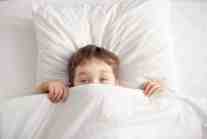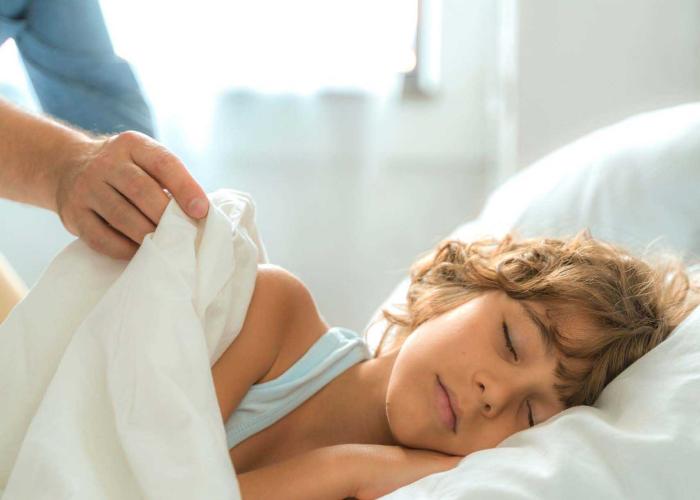Bedwetting
Bedwetting is more common than you think. One in six kids (actually 18.1%) ages 4-12 suffer from bedwetting. Bedwetting can be caused by an imbalance of oxygen due to airway constriction and mouth breathing.
Night Terrors
Despite being “asleep,” the subtle form of suffocation from the reduction in oxygen is very unsettling to the brain. It can create a “flight or fight” response and is sometimes accompanied by nightmares or night terrors—all of which results in restless sleep.
Behavioral Problems
Sleep-disordered breathing is commonly misdiagnosed as ADD, ADHD, or other behavioral problems in children. Many of our young patients have been able to come off medication thanks to their sleep apnea treatment.
Nocturia
Nocturia, a condition in which individuals wake up frequently during the night to urinate, can signify numerous health-related disorders, including OSA.
As with other less obvious symptoms of OSA, the relationship between nocturia and sleep-disordered breathing is still being researched and not fully understood.
One hypothesis is that apneic events throughout the night trigger the heart to secrete atrial natriuretic peptide, a hormone that plays an important role in regulating blood pressure. This release not only reduces intravascular circulatory volume
and blood pressure, but also stimulates kidney function, leading to increased urinary output.

What’s Behind Your Child’s Bedwetting? The Answer Might Surprise You
When a child wets the bed, it can be an embarrassing and stressful situation for both the child and parents. However, nocturnal enuresis, which is commonly referred to as bedwetting, is something most children have gone through during the potty-training years. That’s because it takes longer for a child to learn nighttime bladder control. In fact, according to the National Sleep Foundation (NSF), an estimated seven million children in the U.S. wet the bed regularly.
While bedwetting during these early years may be normal, it can be a frustrating experience for everyone involved and a major disruption to sleep. The NSF recommends that parents have children go to the bathroom just before bed. Additionally, since most bedwetting occurs during the first few hours of sleep, it may be useful for parents to wake the child up to use the bathroom just before the time bedwetting usually occurs. There are even moisture alarms available that will make a noise when the child begins to wet the bed. But what happens when your school-aged child is still wetting the bed? The NSF recommends that if bedwetting continues past the age of 6 or 7, parents should consult their child’s pediatrician.
One common cause of persistent bedwetting in children is Sleep Disordered Breathing (SDB). SDB is a term used for breathing difficulties that occur while sleeping. In children, symptoms of SDB can include snoring, mouth breathing, ADHD, chronic allergies, crowded teeth and bedwetting. It can also be a precursor of Obstructive Sleep Apnea (OSA), a condition that causes repeated episodes of blockage of the airway during sleep. Children with SDB may be irritable, tired during the day and have difficulty focusing in school. But why exactly does SDB lead to bedwetting?
A first-line treatment for SDB in children has been the surgical removal of the tonsils and adenoids, or a T&A. However, while this surgery is successful for some children, it does not always resolve the SDB and its related symptoms. In fact, a 2014 study in SLEEP found that many children who received a T&A continued to have SDB or had a recurrence of breathing problems later on. The SDB that continued was significantly associated with bedwetting.
One of the reasons T&As are not always successful is that muscular discrepancies and skeletal imbalances between the upper and lower jaws have already developed due to poor habits such as thumb-sucking, mouth breathing or tongue thrusting.
Consequently, the Top treatment of SDB is actually early intervention.
Dr Rodrigues has partnered with Vivos life and Myobrace to provide an effective, comfortable, and non-invasive appliance to treat SDB in children as young as two.
Treatment involves fitting your child with a soft, comfortable appliance, similar to a mouth guard, that is generally worn at night. The appliance helps to develop the airway and hold it open during sleep.
The appliance keeps the tongue toward the roof of the mouth, forcing nose breathing and a correct swallow. The great thing about these appliances is that they function while the patient sleeps. For the majority of children using this appliance for SDB, the bedwetting disappears shortly afterward.

